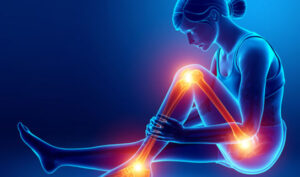Back Pain
Back pain is a common ailment that affects millions of people worldwide. It can be caused by a variety of factors, including poor posture, muscle strain, herniated discs, or degenerative conditions like arthritis. The symptoms of back pain can range from mild discomfort to severe, sharp pain that can make it difficult to move or perform daily activities.
Back Pain Causes:
The causes of back pain can vary depending on the individual and the specific type of pain they are experiencing. Poor posture, muscle strain, and herniated discs are some of the most common causes of back pain. Other factors that can contribute to back pain include obesity, pregnancy, spinal stenosis, and osteoporosis. In some cases, back pain may be a symptom of a more serious condition, such as a spinal tumor or infection.
Back Pain Treatment:
There are a variety of treatments available for back pain, depending on the cause and severity of the pain. Mild cases of back pain can often be treated with rest, ice, and over-the-counter pain medication. Physical therapy and chiropractic care can also be effective in treating back pain, especially when it is caused by poor posture or muscle strain. For more severe cases of back pain, prescription pain medication or steroid injections may be necessary. In some cases, surgery may be required to address the underlying cause of the pain.
Spine Surgery:
Spine surgery is a type of surgical procedure that is performed on the spinal column to treat a variety of conditions, including herniated discs, spinal stenosis, and spinal tumors. There are several different types of spine surgery, including laminectomy, discectomy, and spinal fusion. The specific type of surgery that is recommended will depend on the individual’s condition and the severity of their symptoms. While spine surgery can be highly effective in treating certain conditions, it is typically reserved for cases where other treatments have been unsuccessful.
Hip pain is another common condition that can be caused by a variety of factors, including osteoarthritis, bursitis, tendinitis, or a hip fracture. The symptoms of hip pain can include pain in the hip joint, groin, or thigh, as well as difficulty moving or walking. Treatment options for hip pain may include rest, ice, over-the-counter pain medication, physical therapy, and in some cases, surgery.
Knee Pain:
Knee pain is a common condition that can be caused by a variety of factors, including osteoarthritis, tendinitis, bursitis, or a knee injury. The symptoms of knee pain can range from mild discomfort to severe pain that makes it difficult to walk or perform daily activities. Treatment options for knee pain may include rest, ice, over-the-counter pain medication, physical therapy, and in some cases, surgery. In some cases, knee pain may also be treated with corticosteroid injections or hyaluronic acid injections.
In general, it’s important to seek medical attention if you’re experiencing any of these types of pain, as they can be indicative of underlying conditions that may require medical treatment. Your healthcare provider can help determine the cause of your pain and recommend appropriate treatment options.
Knee Replacement Surgery:
Knee replacement surgery, also known as knee arthroplasty, is a surgical procedure that is performed to replace a damaged or diseased knee joint with an artificial joint. This procedure is typically recommended for individuals who are experiencing severe knee pain or stiffness, and who have not found relief with other treatment options. During the surgery, the damaged portions of the knee joint are removed and replaced with a prosthesis, which is designed to replicate the natural movement of the knee joint. Recovery from knee replacement surgery can take several weeks or months and typically involves physical therapy and rehabilitation to help restore strength and mobility to the knee joint.
Hip Replacement Surgery:
Hip replacement surgery, also known as hip arthroplasty, is a surgical procedure that is performed to replace a damaged or diseased hip joint with an artificial joint. This procedure is typically recommended for individuals who are experiencing severe hip pain or stiffness, and who have not found relief with other treatment options. During the surgery, the damaged portions of the hip joint are removed and replaced with a prosthesis, which is designed to replicate the natural movement of the hip joint. Recovery from hip replacement surgery can take several weeks or months and typically involves physical therapy and rehabilitation to help restore strength and mobility to the hip joint.
Conclusion:
In general, joint replacement surgery can be highly effective in treating severe joint pain or damage, and can significantly improve the quality of life for individuals who have undergone the procedure. However, joint replacement surgery is typically reserved for cases where other treatment options have been unsuccessful and should be carefully considered in consultation with a healthcare provider.




